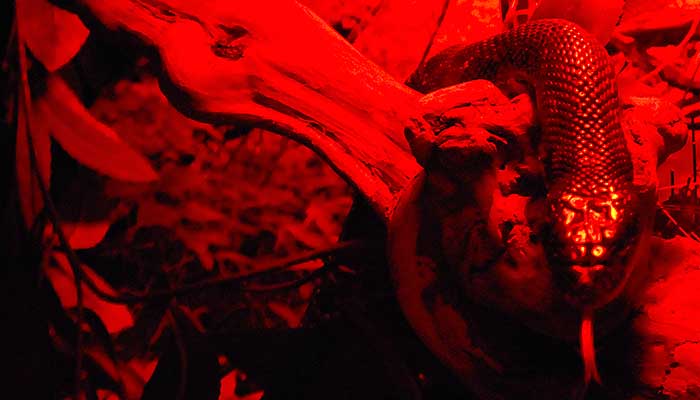
By CRISTINA JANNEY
Hays Post

The creatures in the Sternberg Museum have new homes thanks to a grant from McDonald’s.
The renovated space opened to the public Saturday.
The tanks were custom built for the animals they are holding.
The old tanks lids had to be secured with bricks. All of the new tanks have secure lids, which has allowed the staff to add a venomous copperhead to the main Discovery Room display area. Copperhead venom is used to study and treat breast cancer, Alicia Gaede, Sternberg naturalist, said.
Mice and a big brown bat, Buffy, were added to the Nature at Night exhibit. The main Discovery Room exhibit is focused on animals found on the prairie. Buffy was captured in a motel in Hays and could not be returned to the wild. Buffy has regular opportunities to fly in one of the Sternberg rooms that has no outlets for her to escape, Gaede said.
Gaede said she was hoping to add more small Plains mammals to the exhibit soon.
“It is a nice way for people to see what we have here in Kansas,” Gaede said.

The staff used grant money to add photographs in the backgrounds of the tanks that resemble the native prairie habitats in which the animals live. New faux plants were also added.
New lights were added to the main exhibit areas, so the animals receive the correct UVB light.
New red lighting was added to the Nature at Night exhibit, which is better for the animals. The animals in the Nature at Night exhibit are nocturnal. They can’t see the red light. The crew at the Sternberg turns on the regular lights in that exhibit area at night. This switches the animals’ activity cycle, so they are active during the day when visitors are at the museum and are not active at night.

The most important aspect of the renovation is that the habitats are better for the animals.
“So far, they are loving it,” Gaede said of the animals. “They have been so active. They are rearranging stuff, digging holes and making new hiding spots.”
She added, “I think it is definitely better for the creatures, especially because they are getting bigger cages and good light that is going to keep them warm during the winter. They are also getting proper light to help them grow, which is sometimes an issue for animals in captivity.”
In the new configuration, some of the snakes have “roommates.”
“You wouldn’t really think of them needing social interaction, but it is one of those enrichment things. They smell each other, and it makes them react more, so it doesn’t stress them out as much. … If it is it is the opposite sex as well, they like that even if they are not mating. It is still just the pheromones that help them out to thrive better in captivity.”
Friday night the Discovery Room renovation was unveiled to museum members. Several animals were available for hands-on meet and greets. This included hissing cockroaches; pretzel, a Great Plains rat snake; Oreo, a California king snake; and Red, the American toad.

The American toad and Great Plains rat snake are both native to Kansas.
“I hope people enjoy it,” Gaede said of the renovation. “We put a lot of work into it. It took us about a month to get them done. We did it seeking that our animals had a better life.”
Further renovation of the Discovery Room are planned using the rest of the $10,000 McDonald’s grant. Gaede said she hoped to divide the room into sections based on what lives underground, in a river and in the trees of the Plains.
Future additions may include a tree display, fish tank and ant farm.
